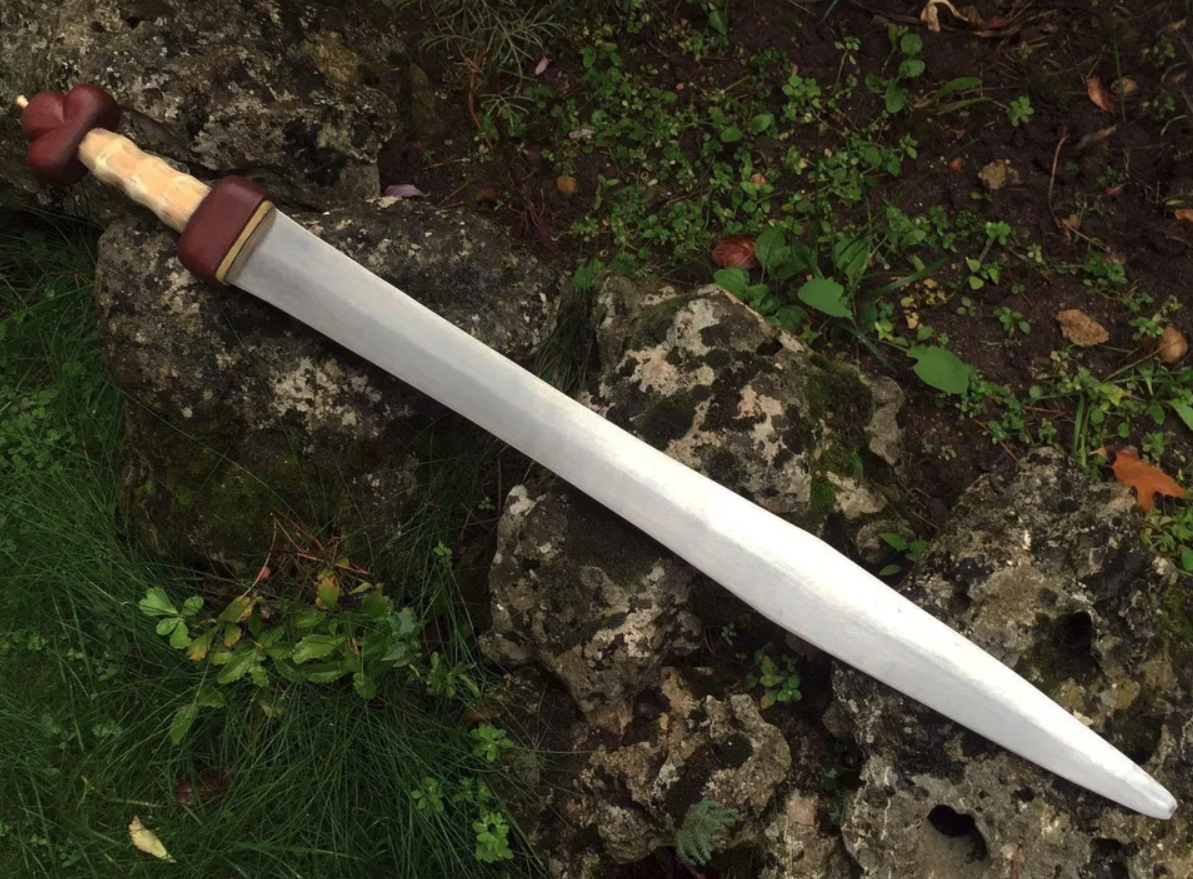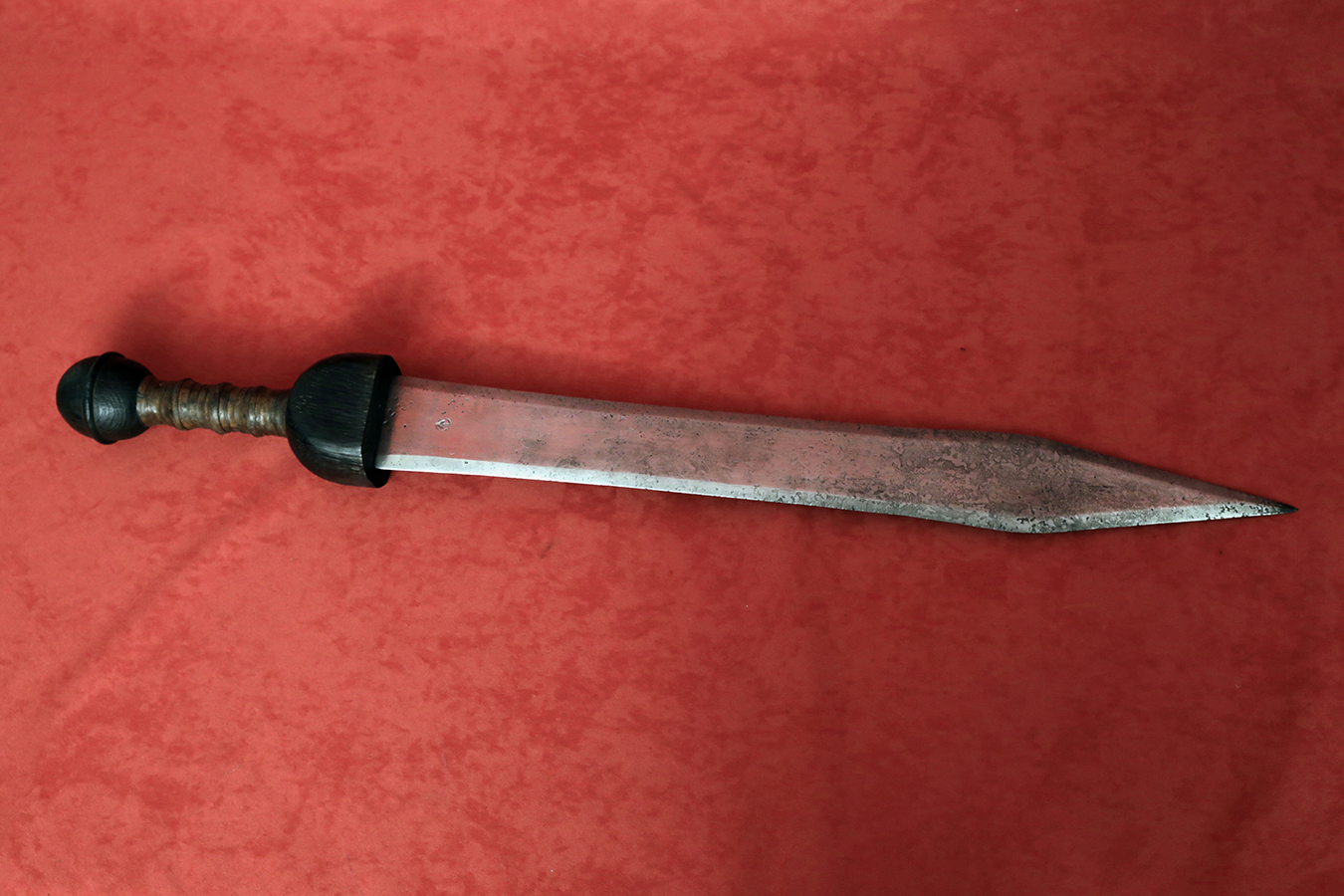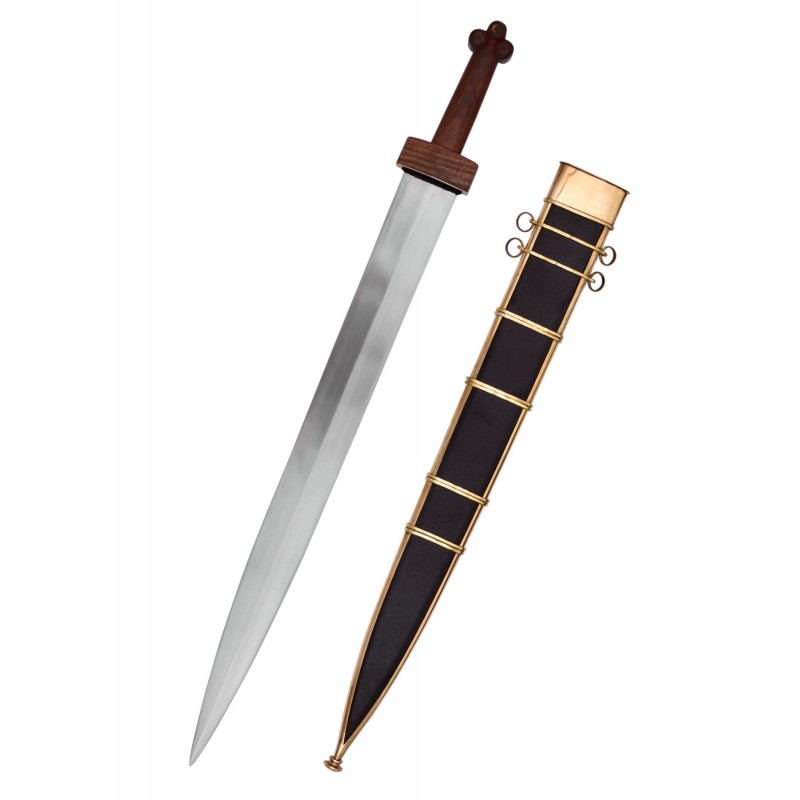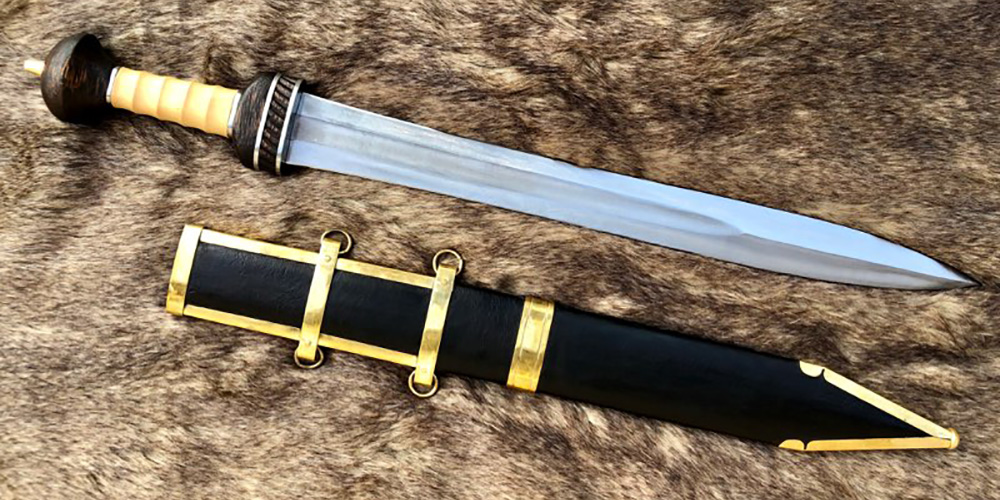
Hispaniensis Gladius Sword High Carbon Damascus Steel 24" Gladiator Battling Blades
The original Hispanic sword, had a slight "wasp-waist" or "leaf-blade" curvature. It was used in the republic. The Mainz variety came into use on the frontier in the early empire.. Gladius Hispaniensis: Used from around 216 BC until 20 BC. Blade length ~60-68 cm (23.6 to 26.7 inches). Sword length ~75-85 cm (29.5 to 33.5 inches). Sword.

Gladius Espadas romanas Espadas ⚔️ Tienda Medieval
The original draft is lost, but this is not too serious a limitation because it will certainly have used the only adjective provided by this language (Iberikè), which does not provide, as already mentioned, the distinction between hispaniensis and hispanicus.. Quesada Sanz argues that 'the prototype of the gladius hispaniensis is a.

Roman Gladius of the Republican Roman period Gladius hispaniensis 3rd Century B.C. Roman
The earliest examples of the gladius Hispaniensis that we have in clearly Roman contexts are two early second-century swords from Grad near Šmihel, Slovenia and they are neat examples of the type. 4 The blades are 62.2 and 66cm, which is to say at the longer end of the range for their Iberian forebears, but that will be typical for the type as the blade-lengths for the gladius Hispaniensis.

Gladius Hispaniensis (Illustration) Ancient History Encyclopedia
Gladius Hispaniensis Timeline. Search Results. c. 250 BCE - c. 200 CE. Originally a Celtiberian weapon, the Gladius Hispaniensis was commonly used by Roman soldiers for more than four centuries. Timeline Search. Search through the entire ancient history timeline. Specify between which dates you want to search, and what keywords you are looking for.

Gladius Hispaniensis High Carbon Damascus Steel 28" Roman/ Gladius Battling Blades
By the end of the 1st century BC, the Hispaniensis form had given way to a new variant of gladius, known today as the Mainz type, named for the German city where the type was discovered, and.

El Gladius Hispaniensis Blog
The archaeological identification of the Hispanic prototype of the gladius hispaniensis (the Republican Roman sword from the Second Punic War onwards), and that of the the gladius hispaniensis itself. has been the subject of debate throughout this century, without being clearly resolved.. The original Celtic r\' BC pOlltet is still there.

Gladius Hispaniensis, Mainz style
THOUSANDS of videos more at 🦅⚡ https://www.youtube.com/channel/UCzmVYmxIvkrjmBNgLJMJYEw/videosENDLESS playlists at 🦅⚡ https://www.youtube.com/@wol.im.hiut..

Iconic Weapons Gladius Hispaniensis The Pensive Warrior
A Roman gladius made c. 15 CE, pictured besides its bronze sheath, which is decorated with tin and gold.This particular sword was found near Mainz, Germany, which is where the style of gladius gets its name. The Mainz gladius was longer, and had a more triangular point than the older Gladius Hispaniensis type.. The ornate sheath depicts the Roman general (and future emperor) Tiberius (r. 14 to.

Europa Ancestral Historia de España y de Occidente La Gladius Hispaniensis
The Roman carries a gladius hispanicus: "Scu/o pedes/n° el gladio rius, Fr. lOb hispanico cinclUs [se.Tirus Manlius] conrra Gallum cinsririt. alque /fispanlco gladio] pectus /uJ.#sil H. The.

The Flaxen Saxon Chronicles Gladius Hispaniensis
Gladius ( Classical Latin: [ˈɡɫadiʊs]) is a Latin word properly referring to the type of sword that was used by ancient Roman foot soldiers starting from the 3rd century BC and until the 3rd century AD. Linguistically, within Latin, the word also came to mean "sword", regardless of the type used. Early ancient Roman swords were similar to.

Ancient Roman Gladius Hispaniensis Panther Wholesale
For four centuries, the gladius was one of the defining weapons of Rome as both a republic and an imperial power. It emerged in the 3rd-century bce, as Rome sought tactical and technological innovations to counter Celtiberian and Carthaginian enemies. The sword was most likely derived from Spanish models, hence the historical name of its first.

Gladius Hispaniensis Completed Crown
This image shows the different major types of Roman gladius hispaniensis, the most well-known sword of the Roman army. The image shows the following gladius types: - Republican. When republishing on the web a hyperlink back to the original content source URL must be included. Please note that content linked from this page may have different.

Compra de una Reproducción de Gladius Hispaniensis Tipo Delos
The differences between the three categories and the original gladius Hispaniensis are not significant from a practical point of view but are quite important to understanding the evolution of this weapon across many decades of combat use. The original Iberian sword, used from approximately 200 BC until 20 BC, had a slight wasp-waist, or leaf.

Kingdom of Arms Hispaniensis Roman Mainz Gladius Sword
The original gladius Hispaniensis may have been nearly as long as a Roman cavalry sword but was reduced to about 25-27 inches in length by the early imperial era. The point was also more tapered.

Gladius Hispaniensis Handcrafted High Carbon Damascus Steel Decorative Battling Blades
The gladius hispaniensis blade was circa 60-68 cm long, with the total sword being around 75-85 cm. The width of the blade was roughly 5 cm. Mainz gladius. The Mainz gladius came into use at the frontier during the early stages of the Roman Empire. It had a shorter and wider blade than the gladius hispaniensis, and ended in a triangular point.

Iconic Weapons Gladius Hispaniensis The Pensive Warrior
Design & Effectiveness. The standard gladius Hispaniensis did not change very much over the years.Made from iron (with a few examples in Toledo steel) it had a straight blade of up to 65 cm (25 inches), pointed tip (mucro) and double edge.Polybius describes the sword thus, "It has an excellent point and a strong cutting edge on both sides, as its blade is firm and reliable" (Polybius 6.23.6-7.